Symbols
Argentina National Flag
The flag of Argentina was created by Manuel Belgrano on February 27, 1812, during the struggle for Independence of the United Provinces of Río de la Plata. Belgrano took the colors of the badge that was already in use. The first time the flag was raised in Buenos Aires on 23 August 1812.
Following the declaration of independence on July 9, 1816, sky-blue flag and white was adopted as a symbol by Congress on July 20 of 1816, Congress added the sun was on 25 February 1818. On June 20 is declared Flag Day as a tribute to Manuel Belgrano (died June 20, 1820).
It consists of three horizontal stripes of equal size, upper and lower blue-blue, and white center, in the middle, a golden yellow sun. The Official Flag measures are 1.40 m long by 0.90 m high (ratio 9 / 14).
The sun will be the figure of eight gold coin shields and silver eight reales, which is recorded in the first currency in Argentina, by Act of the Sovereign Assembly on 13 April 1813, with thirty-two flamboyant and straight rays alternately placed in the same position observed in those currencies. The color of the sun is yellow gold.
Escudo Nacional Argentino
The Argentine national coat-of-arms has its origins in the seal used by the Sovereign General Constituent Assembly of 1813.
Elliptical shape.
Cut sky-blue and silver (white).
In the bottom half, right-handed two-handed shake, holding a pole in sky-blue half holding a Phrygian cap, symbol of freedom. In the end, a rising sun (figuratively, of gold) with twenty-visible rays alternately straight and flame.
Two branches of laurel wreath on the forming face of the sun and cross at the base, tied with a ribbon with the colors of the National Flag.
Argentine Cockade
Patriotic colored ribbon that refers to the nationality of Argentina.
The national colors were used in Argentina since 1811. The colors came from Bourbon, home of Ferdinand VII (king absent from Spain). The white and blue cockade had been used by Avellaneda and other comrades during the British invasions. The Rosette is created by decree on 18 February 1812.
On May 18, as Cockade Day, was instituted by the National Council of Education in 1935

